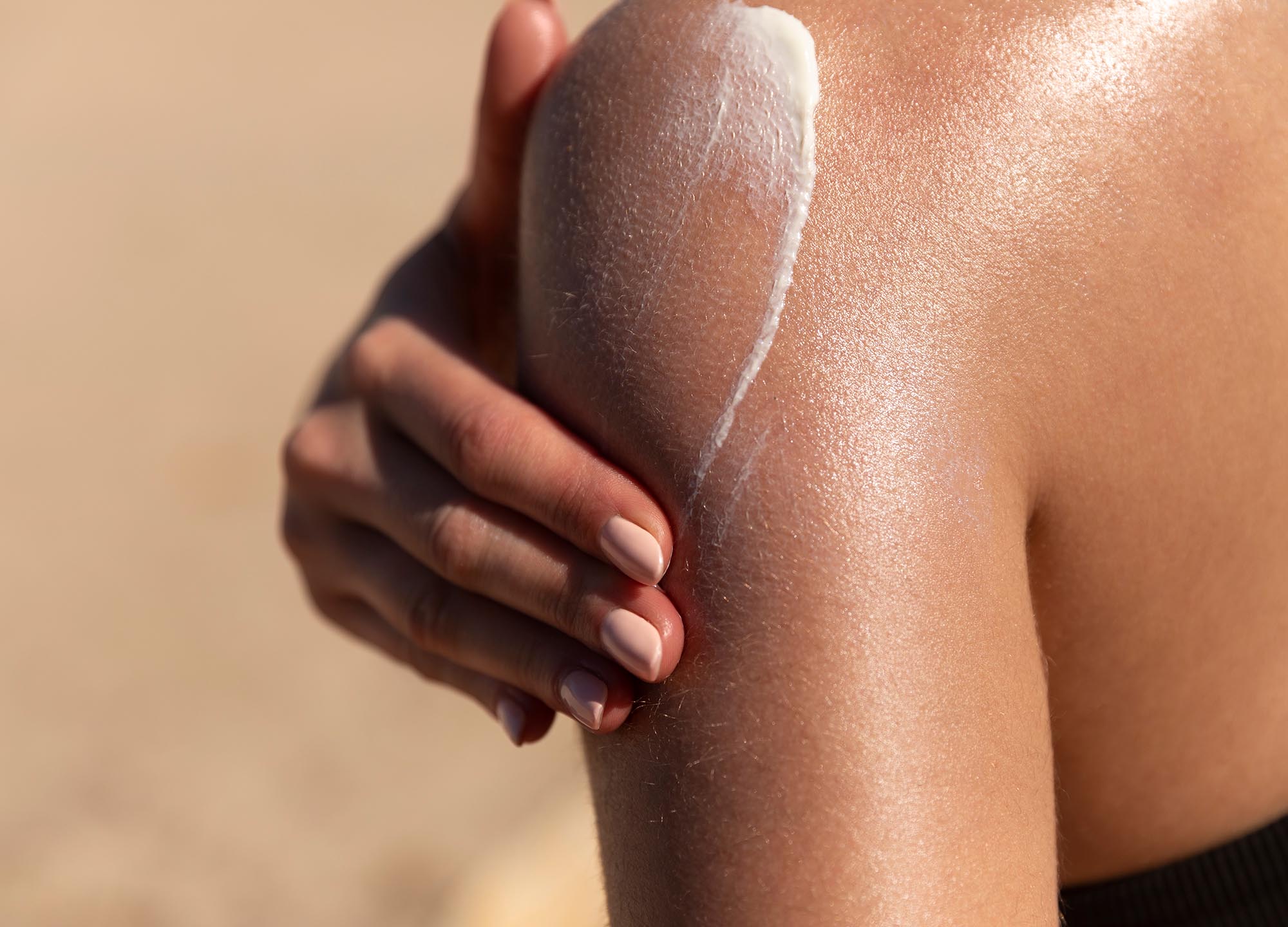Reef-safe. This term is being splashed onto the labels of many new sunscreens, but what is it actually telling you, and should it make you rethink your sun protection plan? The simple answer to the last question is: not unless you’re vacationing in one of the destinations that has enacted a ban on the sale of sunscreen products containing the chemicals oxybenzone and octinoxate. (Mexico, Hawaii, Aruba, Bonaire, the U.S. Virgin Islands, and Palau currently have sunscreen bans in place.) This is because these chemical UV filters, potentially, have a devastating negative impact on the oceans in which we swim, snorkel, and scuba dive.
“We estimate that over 25,000 tons of sunscreen went into the water in tropical coastal areas in 2019 alone,” says Craig Downs, Ph.D., executive director of Haereticus Environmental Laboratory in Lynchburg, Virginia, “and that’s a very conservative estimate.” Downs headed a 2015 study that found that all this chemical sunscreen was causing irreparable damage to reef ecosystems over time. The research showed that high concentrations of oxybenzone and octinoxate in the water are toxic to the algae living within the coral organisms and directly leads to coral bleaching and death. While these two ingredients are singled out, other chemical UV filters, such as octocrylene, could also be harmful to marine life, Downs says.
The fact is, much more research needs to be done. “Chemical sunscreen ingredients have been found to damage coral samples in lab studies,” says Dr. Michelle Wong, an Aussie Ph.D. scientist and educator based in Sydney, “but the high concentration needed to cause harm hasn’t been recorded in the ocean, except for in a handful of studies.” (One of those studies is Downs’ research in the U.S. Virgin Islands and Hawaii.) “Australia has not banned the sale of any chemical sunscreen based on reef concerns, even though our Great Barrier Reef is a national treasure,” she says. While sunscreen contamination is a very valid concern, it may be somewhat low on the list of threats to coral reefs in comparison to climate change and rising sea temperatures, sewage, pollution, and overfishing. “If everybody stops wearing chemical sunscreen when they go into the ocean, will that repair or stop the damage to reefs?” asks Ron Robinson, a cosmetic chemist in New York City and the founder/CEO of BeautyStat Cosmetics. “Right now, we just don’t have enough scientific data to answer that question.”
What makes a sunscreen “reef-safe”?
While there isn’t a scientific definition of this term, it basically describes a mineral-based sunscreen with active ingredients zinc oxide and titanium dioxide and without the chemical UV filters oxybenzone and octinoxate. However, the term is not regulated by the FDA, and no sunscreen formula has been clinically proven to be totally safe for coral reefs. There’s not a standardized “reef-safe” certification to look for on packaging either, although the Environmental Working Group (EWG) and Protect Land & Sea (part of the Haereticus Laboratory) have online lists of safe products that meet rigorous eco-conscious criteria. Ultimately, Wong considers the term reef-safe to be “largely greenwashing,” and Robinson thinks of it as “a marketing tactic that helps to influence consumers.”
Are some mineral sunscreens more reef-friendly than others?
It could depend on the size of those mineral particles. Micronized and nano-size zinc particles are super-tiny and less likely to look and feel like white paste on your skin. (A nanometer is 1,000 times smaller than the thickness of a strand of hair.) “As of now, there’s no scientific data showing that mineral UV filters cause any harm to marine life, because they don’t absorb into, or alter, the organisms,” says Robinson. But to be truly eco- and coral-safe, you could opt for a “non-nano” mineral formula, although sleuthing out that information on a product label can be challenging. (Sometimes “non-nano” can be found in small print next to the percentage of zinc.) “Non-nano mineral particles that are 100 nanometers in diameter or larger are relatively harmless, and some studies show that they act like particulate sediments that sink to the bottom of the ocean,” says Downs.
Two of our favorite non-nano picks: Supergoop! Sunnyscreen 100% Mineral Lotion SPF 50 ($26) and Babo Botanicals Sheer Zinc Continuous Spray Sunscreen ($18.99), both of which blend easily into skin.
The bottom line
You need to wear a broad-spectrum sunscreen with an SPF 30 or higher every day, and you’ll do that only if you like how the formula looks and feels. “I don’t want to tell people that they’re stuck with only mineral sunscreen options that are reef-safe, because they may use that as an excuse and end up not wearing any sunscreen at all,” says Dr. Orit Markowitz, a board-certified dermatologist in New York City. “You have to consider the risk/benefit ratio—while it’s important to do our little part to care for the environment, we also need to protect our skin by applying, and reapplying, sunscreen.”
She also mentions that a mineral-based sunscreen has other benefits, such as working as a physical UV block the second you put it on and being less irritating for sensitive skin. Markowitz recommends wearing a daily broad-spectrum sunscreen that you like, whether it’s chemical or mineral, and if you’re lucky enough to be visiting a coral reef paradise this summer, using a mineral sunscreen (or—even easier—UPF sun-protective clothing) on those beach days. “A sunscreen doesn’t have to have the term ‘reef-safe’ on the label in order to be reef-friendly,” says Dr. Markowitz. “As long as it’s mineral-based, you can feel that you’re being environmentally safe.”











